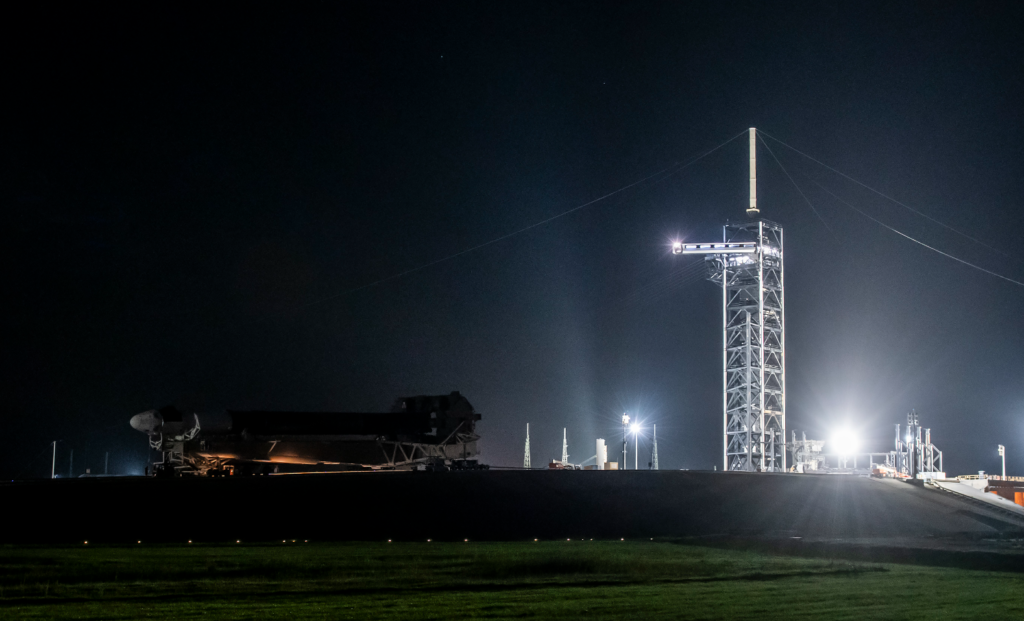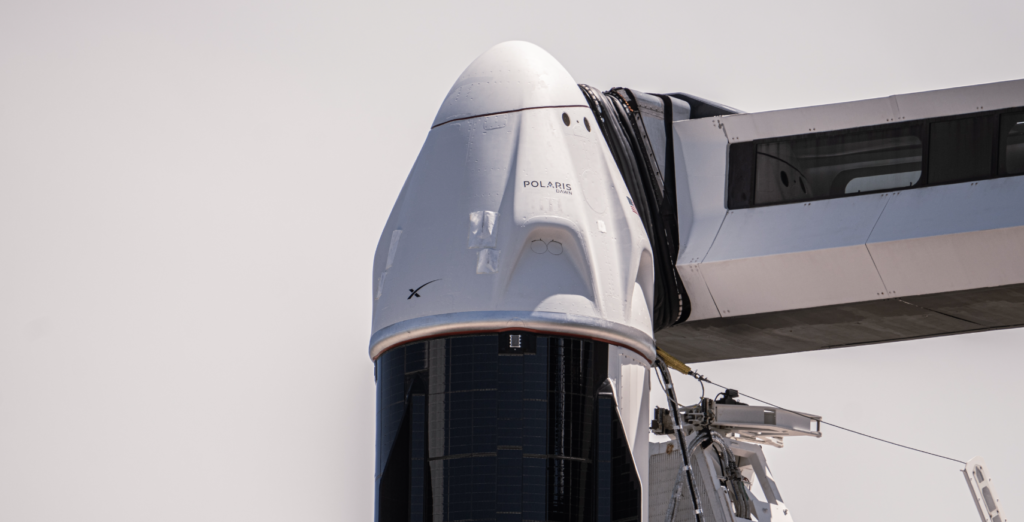A few days ago on the 28th, a failed Falcon 9 booster landing resulted in a prompt grounding of the vehicle from the FAA. The agency had begun an investigation into the anomaly and for the time being, didn’t want the rocket flying. With SpaceX’s busy flight manifest including the Polaris Dawn mission practically ready to launch, this brought some concerns as to what delays would be caused.
Fortunately, only a few days later the agency confirmed that the Falcon 9 could return to flight. Here I will go more in-depth into the ongoing investigation, upcoming launches, the quick grounding, and more.
A Short Grounding

In total, the Falcon 9 was grounded for less than 72 hours. Even still, that relatively short timeframe kept a few missions from launching. For context, on the 28th during a regular Falcon 9 Starlink launch, the rocket successfully deployed its payload however the booster, which was attempting its 23rd landing, collapsed on the droneship before tipping over. As of right now SpaceX is still investigating the landing attempt and will likely share more specific information in the future.
Either way, soon after that anomaly, the FAA released a statement saying, “The FAA is requiring an investigation. A return to flight of the Falcon 9 booster rocket is based on the FAA determining that any system, process, or procedure related to the anomaly does not affect public safety. In addition, SpaceX may need to request and receive approval from the FAA to modify its license that incorporates any corrective actions and meet all other licensing requirements” they said.
While a booster crashing way out at sea on a droneship doesn’t necessarily pose any safety concerns, the actual event deviating from the planned flight profile is what gets the FAA involved. On top of that, the agency likely wanted to make sure the issue was simply with the landing gear or landing stability rather than an engine problem that occurred right at landing.
In terms of the quick turnaround, just one day after the incident and the start of the FAA investigation, SpaceX made the return to flight request on August 29th. The next day on the 30th, the FAA gave approval for the company to begin launching again. In an official statement, the agency said, “The SpaceX Falcon 9 vehicle may return to flight operations while the overall investigation of the anomaly during the Starlink Group 8-6 mission remains open, provided all other license requirements are met.”
In other words, the investigation is still ongoing to figure out exactly what went wrong, however, the FAA has determined that it doesn’t impact the safety of the public and SpaceX is fine to keep launching. This correlates with some of the little information we have received from SpaceX regarding the landing attempt. For example, the Vice President of Falcon launch vehicles at SpaceX was quoted saying, “One thing we do know though is this was purely a recovery issue and posed no threat to primary mission or public safety.” This no doubt had an influence on the FAA’s decision and flight approval.
With that news, the company immediately launched two Starlink missions back to back. Specifically, very early this morning they launched separate missions within only a few hours of each other from both Florida and California. Also, both launches featured a drone ship landing.
The first flight out of Florida successfully deployed its satellites and the booster landed on Just Read The Instructions marking its 18th individual launch and landing. About an hour later the other Falcon 9’s booster which just launched from California landed on the Of Course I Still Love You droneship.
These immediate launches are good signs that SpaceX has an idea of what went wrong during the failed booster landing and is eager to continue. Also, the use of an experienced booster with 18 landings means they must be comfortable with hardware that has quite a history despite the recent anomaly.
After the launches, SpaceX tweeted saying, “Falcon 9 delivers 42 Starlink satellites, including 26 with Direct to Cell capabilities, to low-Earth orbit in back-to-back launches from Florida and California.” Over the next few days, we can expect even more launches as SpaceX works to catch up on any missed flights and get the Falcon 9 launching consistently again.
Polaris Dawn

At the same time as all of this is happening, SpaceX has been right on the edge of a very significant human mission. In the last week or so both the Polaris Dawn rocket and crew have been ready to liftoff pending weather along with the grounding.
The first opportunity was early in the morning on the 27th. In that case, the night before on the 26th, while teams were performing pre-launch activities, SpaceX found a ground-side helium leak on the Quick Disconnect umbilical. They confirmed that the Falcon and Dragon remained healthy however this issue forced the company to push back the launch to one of the backup dates. The first available opportunity was the 28th.
Leading up to that new launch opportunity the weather was looking favorable, at least at first. However, on the 27th SpaceX tweeted saying, “Due to unfavorable weather forecasted in Dragon’s splashdown areas off the coast of Florida, we are now standing down from tonight and tomorrow’s Falcon 9 launch opportunities of Polaris Dawn. Teams will continue to monitor weather for favorable launch and return conditions.”
This is where the mission profile of Polaris Dawn has quite a big impact on the availability of when it can launch. Normally on a human mission such as one to the ISS, the launch isn’t necessarily impacted by the return conditions. The main reason being they can simply stay at the ISS a bit longer and then return when the weather permits. On this mission, however, the return date is set and they have to plan ahead.
Jared Issacman, the commander of the mission clarified in a tweet saying, “The primary factor driving the launch timing for Polaris Dawn is the splashdown weather within Dragon’s limits. Unlike an ISS mission, we don’t have the option to delay long on orbit, so we must ensure the forecast is as favorable as possible before we launch.”
The most recent update we got came on the 29th when SpaceX said, “Latest forecasts continue to show unfavorable weather conditions in the areas along Florida’s coast where Dragon would splash down upon returning from space. Once teams identify the next best opportunity for launch and return of the Polaris Dawn mission, we’ll provide an update. Falcon 9 and Dragon remain healthy and vertical on the pad at 39A” they said.
On the bright side, Issacman said that “The crew remains in quarantine, staying productive, keeping fit, and ready to launch within approximately 30 hours of receiving a favorable forecast.” This means that when an opportunity does finally open up, they should be ready in a short amount of time.
Looking at the mission profile and goals helps put in perspective the importance of safe launch and landing conditions. The Dragon spacecraft supporting this mission previously flew Crew-1 to and from the International Space Station, and Inspiration4, the first all-civilian mission to orbit. This will be the fourth flight for the first stage booster supporting this mission, which previously launched Crew-8 and two Starlink missions. Following stage separation, Falcon 9’s first stage will land on the A Shortfall of Gravitas droneship stationed in the Atlantic Ocean.
As for the mission, during their multi-day trip to orbit, Dragon and the crew will endeavor to reach the highest Earth orbit ever flown since the Apollo program and participate in the first-ever extravehicular activity (EVA) by commercial astronauts wearing SpaceX-developed EVA suits. They will also conduct 36 research studies and experiments from 31 partner institutions designed to advance both human health on Earth and during long-duration spaceflight, and test Starlink laser-based communications in space.
In total, Dragon and the Polaris Dawn crew will spend up to five days in orbit. For the spacewalk, at approximately 700 kilometers above the Earth, the crew will attempt the first-ever commercial extravehicular activity (EVA) with suits upgraded from the current intravehicular (IVA) suit. The purpose has to do with future plans and goals. The company is quoted saying, “Building a base on the Moon and a city on Mars will require thousands of spacesuits; the development of this suit and the execution of the EVA will be important steps toward a scalable design for spacesuits on future long-duration missions.”
During the launch, it’s expected to take advantage of Falcon 9 and Dragon’s maximum performance, flying higher than any Dragon mission to date and endeavoring to reach the highest Earth orbit ever flown.
Earlier this month Jared Issacman gave a great overview of exactly what to expect. The first day is mainly about looking for a time when there’s minimal risk from micrometeorite orbital debris. After reaching an orbit of 190 kilometers by 1,200 kilometers, the crew will do extensive checks of SpaceX’s Dragon capsule Resilience. “It’s really important to know that the vehicle has no faults before going up to 1,400 kilometers” altitude. He went on to say, “You ideally want to take that at the lowest altitude as you can because even down at 200 kilometers, the radiation level there is substantially higher … Our two or three passes at high altitude through the South Atlantic Anomaly will be almost the entirety of the radiation load on the mission and like an equivalency of three months on the International Space Station.”
Conclusion
The last week has been a busy one for SpaceX with the booster landing, trying to launch Polaris Dawn, and a short grounding. Now the company is launching again and trying to find an opportunity with the weather to launch the crew. Something we should hear more about in the coming days.
